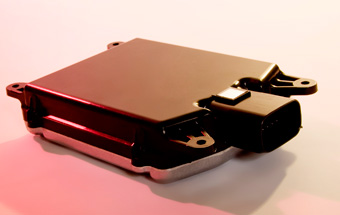
Collision-avoidance for entry-level vehicles lies on the horizon with TRW Automotive’s planned 2013 production launch of a low-bandwidth collision-warning system for the European market.
Such systems largely are the domain of luxury-segment vehicles and operate at 77 GHz. But TRW’s 24-GHz technology will provide the benefit of collision warning at a cost that is “fundamentally lower,” says Matt Roney, vice president-product planning.
A lower-bandwidth system is less effective at higher speeds than one that operates at 77 GHz, Roney concedes. But it “works great” up to about 87 mph (140 km/h).
“We actually feel this has a very good application for the North American market,” he tells Ward’s, adding TRW is in “active discussions” with several auto makers.
Potential pricing is in line with expectations for C-segment or even B-segment vehicles, Roney claims.
He is mum on details of the 2013 launch in Europe.
Longer range, Roney envisions entry-level vehicles as beneficiaries of collision-avoidance technology, which adds elements such as automatic braking or subtle steering inputs to collision-warning systems.

This scenario becomes more likely if the building blocks of these systems, such as 24 GHz radar, first proliferate in high-volume segments such as C- and B-cars.
“We want to bring radar and the longitudinal control and safety applications to mass-market vehicles,” Roney says of TRW.
TRW made its mark in collision-warning technology with a 77 GHz system on the ’02 Volkswagen Phaeton luxury sedan.
“Some of our competitors were hitting the market around the same time,” Roney says. “But what you saw was a very similar profile of vehicles, very high-end luxury vehicles. Daimler launched radars on their S-Class. And then you saw a few other competing technologies like LIDAR, which is laser-based, on some of the Volvo vehicles.
“We’re still focused on radar,” he adds. “What has changed is we are introducing a radar with a different frequency band.”



